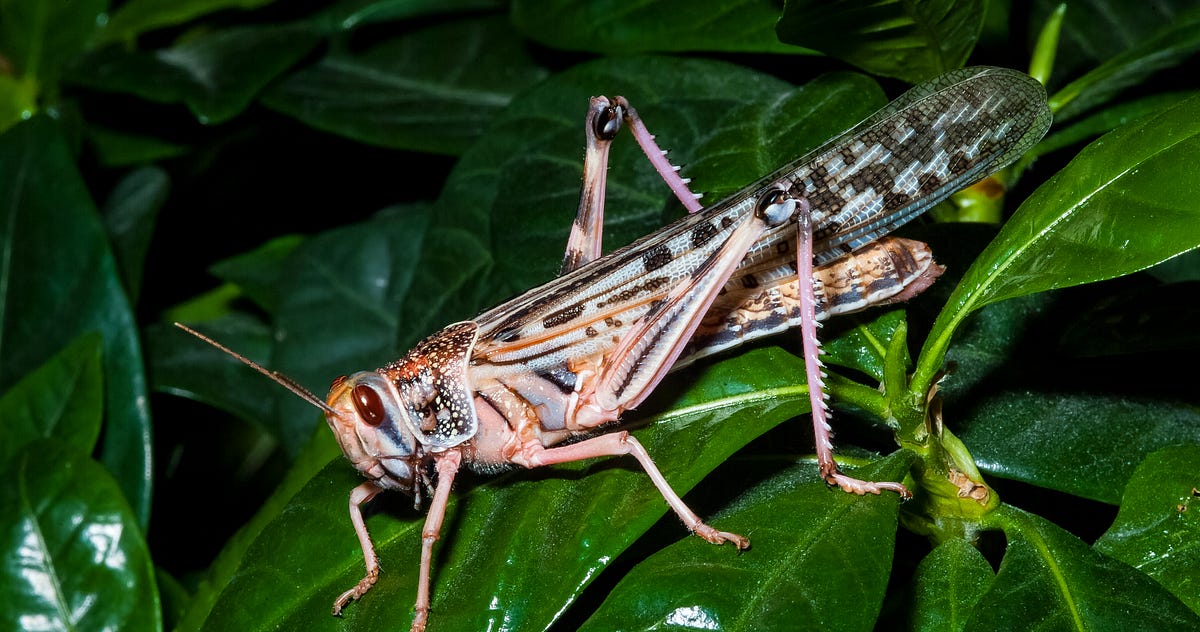In June, remote sensing analyst Raj Bhagat noticed a strange signal on India’s weather radar. It looked like a small band of rain near Delhi, moving southwest, but Bhagat was convinced it was a locust swarm.
“People began to report it,” he says, referring to sightings on the ground. Giant locust swarms had spread to northern India earlier in the year, ravaging crops and destroying people’s livelihoods. “The timelines were perfectly matching.”
In mid-July, Bhagat, who works at the World Resources Institute India, identified a similar formation, this time near the city of Lucknow. He posted it to Twitter with the hashtag #LocustsAttack.
The desert locust upsurge is yet another of 2020’s horrors. In dry years, the insects, which can grow up to four inches long and are shades of green, black, or yellow depending on their life stage, remain localized to the deserts of Africa, the Middle East, and southwest Asia. Lately, however, the weather has been wetter than usual. Desert locusts have bred prolifically and migrated in huge swarms to countries that don’t always see them in large numbers, including several nations along the horn of Africa. Other places, such as the state of Uttar Pradesh in India, haven’t had a locust invasion in decades.
The locust outbreak is currently classed by the United Nations Food and Agricultural Organization (FAO) as an “upsurge.” If the insects begin migrating in large bands — which could happen within a couple years, should things worsen — they’ll be officially considered a plague.
#insects #tracking #environment #radar #technology #big data
